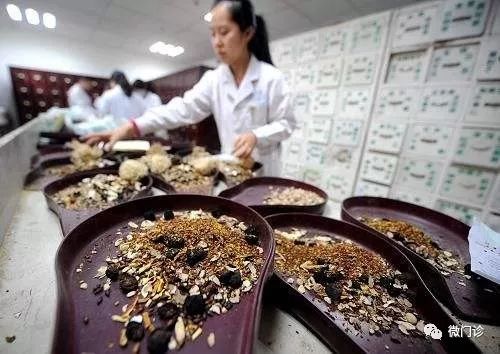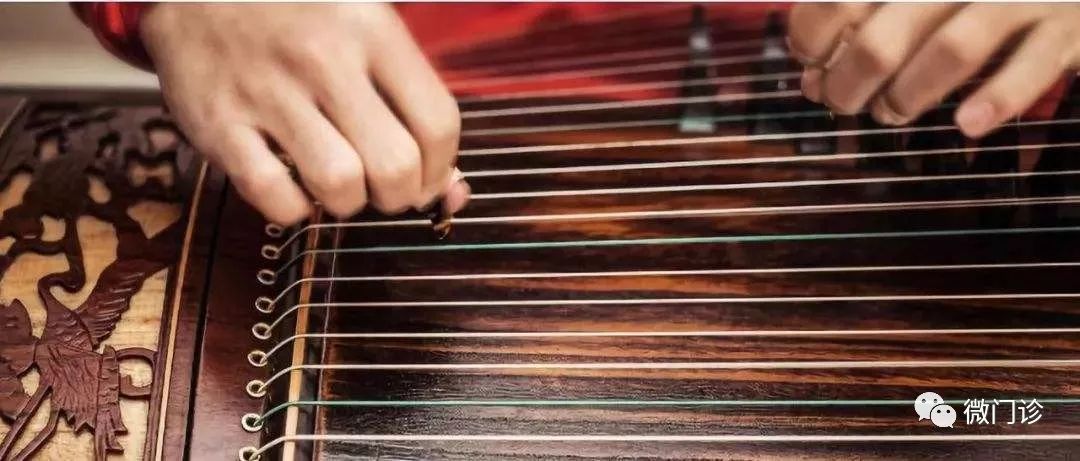(This article is original content and may not be reproduced or quoted without permission!)
The theoretical basis of this article: “Advanced Series of Traditional Chinese Medicine: Formulas”, “Selected New Uses of Ancient Formulas”, “Traditional Chinese Medicine Treatment”
Discussing the principles of Qi Huang, aiming for the welfare of all, I welcome all readers. I am a practitioner of Traditional Chinese Medicine, Wen Junran.
Today, I will talk to you about liver Qi stagnation.
A few days ago, one of my students chatted with me and mentioned that people today suffer from too many ailments. He asked me why. I told him it depends on the type of illness. If we exclude major diseases and only consider minor ailments, one significant reason is liver Qi stagnation.
Why do I make this assertion? It starts with my personal experience.

I remember one year, I attended a colleague’s child’s wedding. During the meal, people around me, knowing I practiced TCM, were very curious. One girl, probably not yet 30, asked me a question. What was her problem? Headaches. The Western diagnosis was vascular headaches, with pain throbbing on both sides of her head, occurring 3 to 4 times a day, severely affecting her sleep.
I examined her tongue and found it slightly dark red with some purple spots. The pulse was wiry.
I was surprised: how could such a young woman have this condition? I asked her profession and whether she often felt unhappy or dissatisfied. To my surprise, this question opened the floodgates. It turned out she was a primary school teacher, 28 years old, with a 6-month-old child. The work pressure at school was quite high, and at home, she was overwhelmed with childcare and family dynamics. Over time, her headaches became more pronounced and frequent. 
Based on her situation, I prescribed a small formula using Chai Hu (Bupleurum), Xiang Fu (Cyperus), Zhi Ke (Bitter Orange), Bai Shao (White Peony), Chuan Xiong (Szechuan Lovage), Dan Shen (Salvia), Ge Gen (Kudzu), and Gan Cao (Licorice).
I thought she was the only patient. Unexpectedly, many of her colleagues, also primary school teachers, wanted me to check their pulses. I felt embarrassed to refuse, so I examined three or four more.
At this point, I was astonished to find that they all had a wiry pulse.
I instantly realized this was a common issue that deserved attention.
Let’s talk about the first female teacher. Her problem was due to liver Qi stagnation and blood stasis.
The liver meridian runs along the sides of the head. Liver Qi stagnation leads to obstruction in the meridians, causing her migraines. When liver Qi stagnates, it cannot promote blood circulation, resulting in blood stasis. When liver Qi is not smooth, the heart and spirit are not at ease, leading to poor sleep. The dark red tongue with purple spots is a sign of liver Qi stagnation and blood stasis. Although she did not mention it, I knew she must have many worries and emotional distress, which are also manifestations of liver Qi stagnation. Most importantly, her pulse was what we call a “wiry pulse.” What is a wiry pulse? It feels hard and taut, like pressing on an ancient musical instrument’s string. Lightly, it feels like a string; heavily, like a bowstring. In severe cases, it feels as sharp as pressing on a knife’s edge.

Why do people with liver Qi stagnation have this pulse? The liver governs the tendons, and the pulse corresponds to the tendons. When liver Qi stagnates, the entire pulse becomes tense. This tension makes it hard and inflexible, resulting in a wiry pulse. In textbook terms, this is described as Qi stagnation leading to meridian constriction.
For this type of headache, why did I prescribe Chai Hu, Xiang Fu, Zhi Ke, Bai Shao, Chuan Xiong, Dan Shen, Ge Gen, and Gan Cao?
In fact, this includes a formula, Chai Hu Shu Gan San (Bupleurum Powder to Spread the Liver), and I added more Dan Shen and Ge Gen, which are herbs that invigorate blood and relax the tendons. Chai Hu Shu Gan San is a commonly used formula in TCM for soothing the liver, relieving stagnation, and alleviating pain. The original formula consists of Chen Pi (Dried Tangerine Peel), Chai Hu (Bupleurum), Chuan Xiong (Szechuan Lovage), Zhi Ke (Bitter Orange), Bai Shao (White Peony) each 4.5 grams, Gan Cao (Licorice) 1.5 grams, and Xiang Fu (Cyperus) 4.5 grams. Among them, Chai Hu, Chuan Xiong, and Xiang Fu soothe the liver and promote Qi, while Bai Shao nourishes the blood and softens the liver. Chen Pi and Zhi Ke regulate Qi and strengthen the spleen. This formula addresses the root cause of liver Qi stagnation, making it effective for various conditions caused by liver Qi stagnation, including migraines.
This is not a secret, nor is it anything new. However, I have noticed that many modern people have a wiry pulse. This is a very concerning issue because a wiry pulse often indicates liver Qi stagnation. If the state of liver Qi stagnation persists without improvement, the minor ailments and miscellaneous diseases they experience will only increase, perhaps even exponentially.
Some people suffer from otitis media, with a feeling of fullness and pressure in the ears, and decreased hearing. This may be due to liver Qi stagnation, as the liver and gallbladder meridians run through the ears.
Some have chronic pharyngitis, with a sensation of a foreign body in the throat. This may also be due to liver Qi stagnation, as the Qi of the liver meridian is not smooth, leading to phlegm and Qi stagnation in the throat.
Some experience stomach pain with superficial gastritis and frequent belching. This may be due to liver Qi stagnation, as it can harm the spleen.
Others may have constipation, which can also be attributed to liver Qi stagnation. When liver Qi is not smooth, it disrupts the large intestine’s function, leading to constipation.
Additionally, some may have lower back pain that improves with movement. This may be due to liver Qi stagnation, as the Qi in the meridians is not flowing smoothly.

You see, these minor ailments and miscellaneous diseases are all caused by liver Qi stagnation, right? Thus, I told my student that many minor issues, especially those of modern people, stem from liver Qi stagnation. To put it playfully, it’s like liver Qi is not circulating, leading to endless minor ailments.
Well, the application of Chai Hu Shu Gan San is not something everyone can implement. It requires precise differentiation and appropriate adjustments. After understanding this principle, readers should consult a TCM practitioner for guidance. In daily life, we can use acupoints to achieve the goal of soothing the liver and relieving stagnation. We can use Qimen (Qimen Point) and Taichong (Taichong Point). Qimen can soothe the liver and regulate Qi, dissipating stagnation and resolving masses. Taichong can also soothe the liver and regulate Qi, clearing and calming the liver. The combination of both is very effective.
The article concludes here. I hope everyone can effectively improve liver Qi stagnation and stay away from it. This is a beautiful wish, but I do not know how many people can achieve it.

